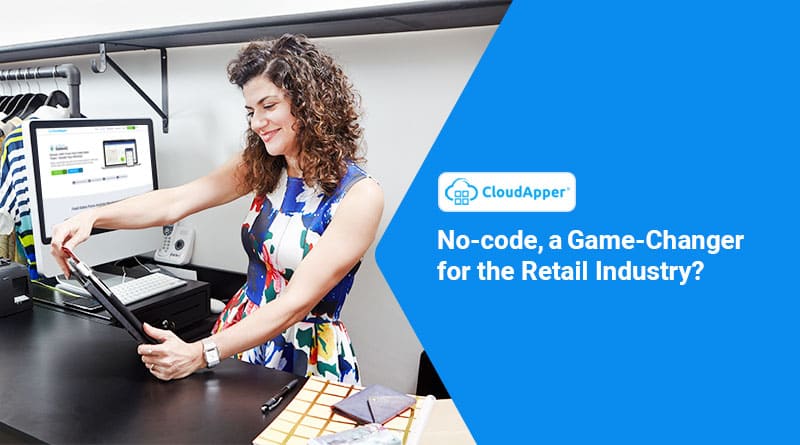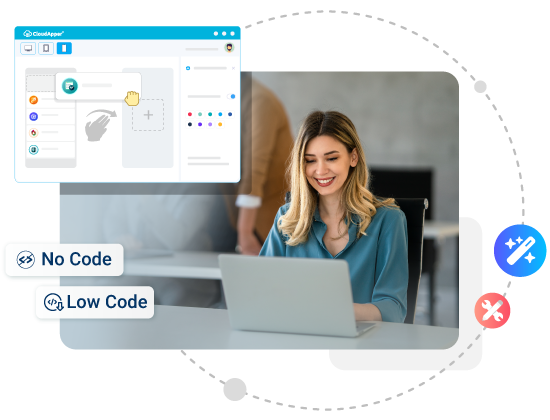The rise of online outlets was already challenging the retail industry’s relevance, and the pandemic has inflicted a further strain upon retailers relying on brick-and-mortar outlets by triggering a disruptive change in market conditions, supply and demand equation, consumers’ behavior, and workplace settings.
Retailers who hurriedly converted to online storefronts are encountering both front-end and back-end challenges, such as:
– Messy cataloging (for example, best-selling goods not being featured at the right time).
– Lack of personalization for shoppers.
– No real-time notifications on price changes or out-of-stock products.
To sail through this untimely upheaval, merchants need to use the proper digital technology and construct flawless apps, swiftly and immediately.
According to research by McKinsey:
– 45 percent of merchants regarded COVID-19 as the largest problem of 2021, and 30 percent of them exhibited faith in the tremendous potential of going digital.
– Activities that can be automated are presently occupying 40 percent of retailers’ time.
– Automation will bring roughly $24.6 billion in value to the retail business by 2025.
The aforementioned data illustrate both squandered opportunities and a hopeful future for the retail business in the area of process automation.
Adopt No-Code Platform
With no-code technologies, merchants can construct tailor-made digital storefronts, automation programs, and progressive web apps swiftly and in a highly composable form—
– Without an army of software developers.
– Making software development more accessible.
– Making non-technical staff citizen developers so that the company may be more inclusive.
– Allowing for rapid modifications.
Without creating a single line of code, non-developers may use no-code to design retail sales operation execution solutions by dragging and dropping components (like Lego pieces). Retail shop data can be recorded in real-time with no-code apps, reducing bounce rates and allowing for rapid replacement of out-of-stock goods. Aside from that, they may develop authorized product lists for each shop, disseminate sales materials via mobile devices, and send out real-time warnings to stakeholders when problems emerge in-store.
No-code apps don’t need to be as extensively monitored and maintained by IT staff. They can put their knowledge to work on more important projects rather than becoming bogged down in day-to-day issues. No-code development has a quicker software development cycle than traditional or low-code development. It is therefore ideal for merchants that are seeking quick and efficient changes.
The Retail Industry’s Most Important No-Code Use Cases
The following retail IT efforts can benefit from no–code.
In a highly competitive business, like retail, it’s not just about earning a sale; customer retention is just as important. With constant efforts, retailers must gain the confidence and business of their customers. Their client retention efforts (such as distributing loyalty points, discount codes, tailored vacation packages, and feedback surveys) may be automated with no-code apps so they can focus on growing their customer base. Retailers can benefit from no-code automation in the following ways:
– Providing consumers with a high-touch, individualized service.
– Increasing the lifetime value of customers.
In any retail facility, a well-informed and empowered floor manager is an advantage. A mobile app that doesn’t require any coding can provide real-time inventory updates from a mobile device. A floor manager may use the app to check the inventory of surrounding stores and locations and direct consumers accordingly if an item is unavailable at their location. Because of this:
– Customer service quality will be improved.
– Fewer customers will be lost.
– Inventory levels will be better controlled.
Retailers need to hit the bullseye with their merchandise planning to balance the risks connected with inventories forecasts, sales and promotions, and price. To ensure that their goods and promotions are always on target, they must base their decisions on actionable information rather than speculation. Predictive analytics (AI) may help retail teams do the following:
– Examine the merchandise’s past, current, and future tendencies.
– Make well-informed purchasing selections.
– Make the most of chances that they would have otherwise overlooked.
Retailers need to stay on top of inventory management and merchandise planning to maintain a proper balance between demand and supply. By using a no-code app, retailers can examine their retail inventory from every angle and determine which goods require replenishment and which are ready to move. A number of new no-code AI apps may be able to aid shops in dealing with demand fluctuations based on historical and projected trends.
Conclusion
Retailers can rapidly and cheaply add new features and capabilities using no-code technologies. Retailers who are on board with the no-code movement will be in a better position to adapt to changing market conditions quickly and safely. In some circumstances, the shorter software development life cycle can reduce the time-to-market by as much as ten times. With the advent of no-code, merchants can now take a giant step ahead in digitizing their operations while also saving time, money, and resources.
What is CloudApper AI Platform?
CloudApper AI is an advanced platform that enables organizations to integrate AI into their existing enterprise systems effortlessly, without the need for technical expertise, costly development, or upgrading the underlying infrastructure. By transforming legacy systems into AI-capable solutions, CloudApper allows companies to harness the power of Generative AI quickly and efficiently. This approach has been successfully implemented with leading systems like UKG, Workday, Oracle, Paradox, Amazon AWS Bedrock and can be applied across various industries, helping businesses enhance productivity, automate processes, and gain deeper insights without the usual complexities. With CloudApper AI, you can start experiencing the transformative benefits of AI today. Learn More

















